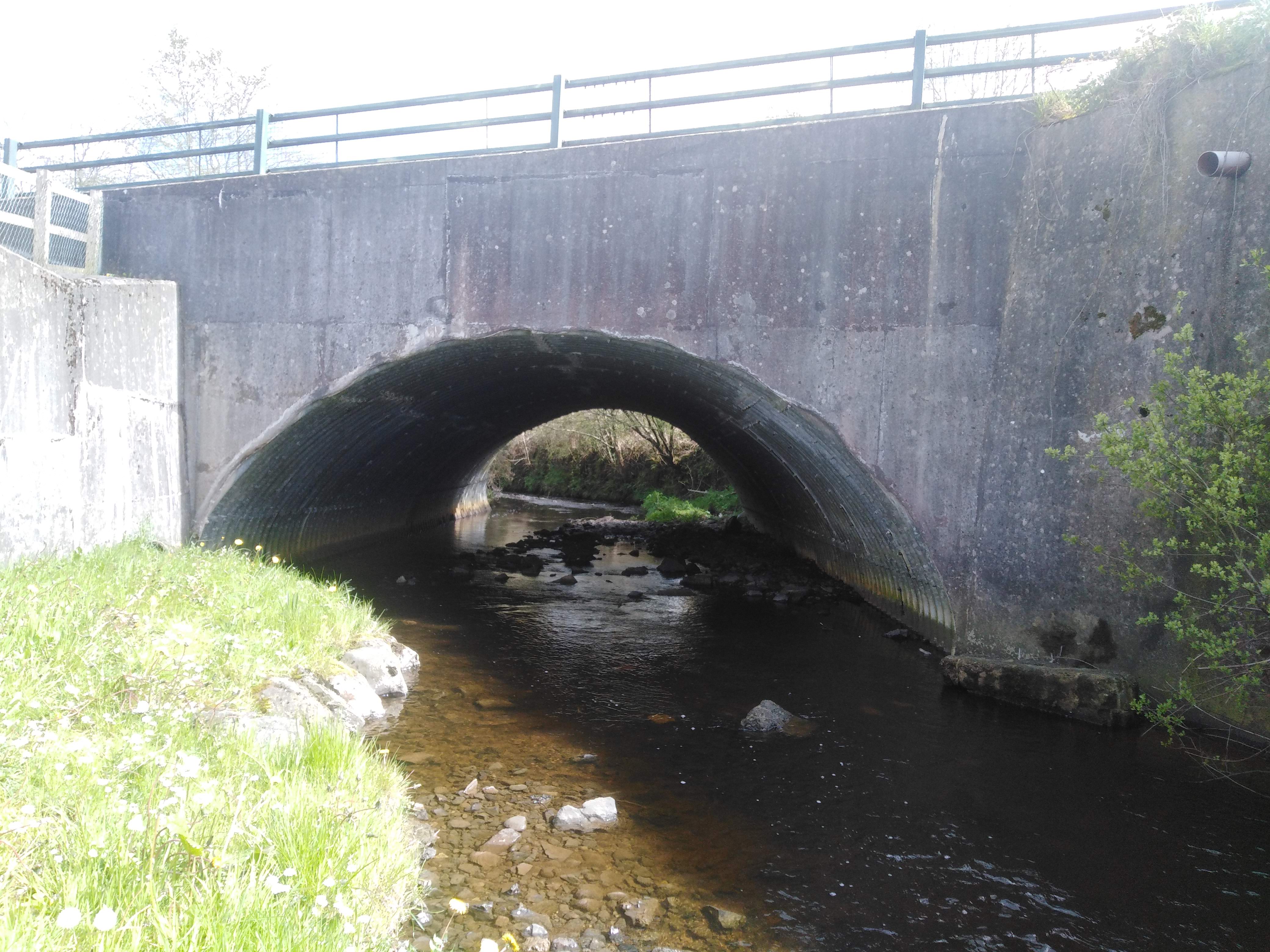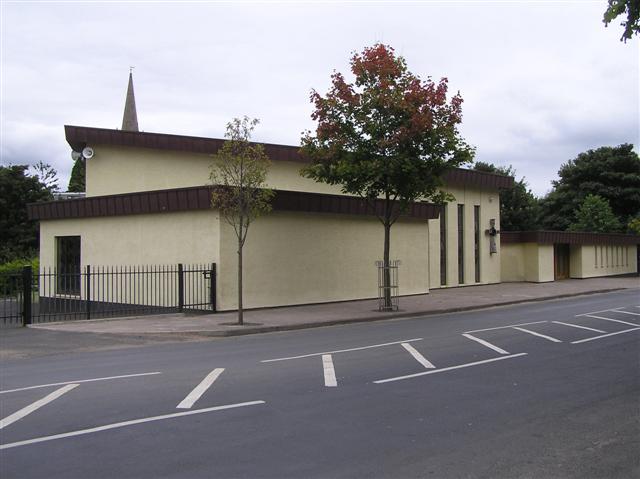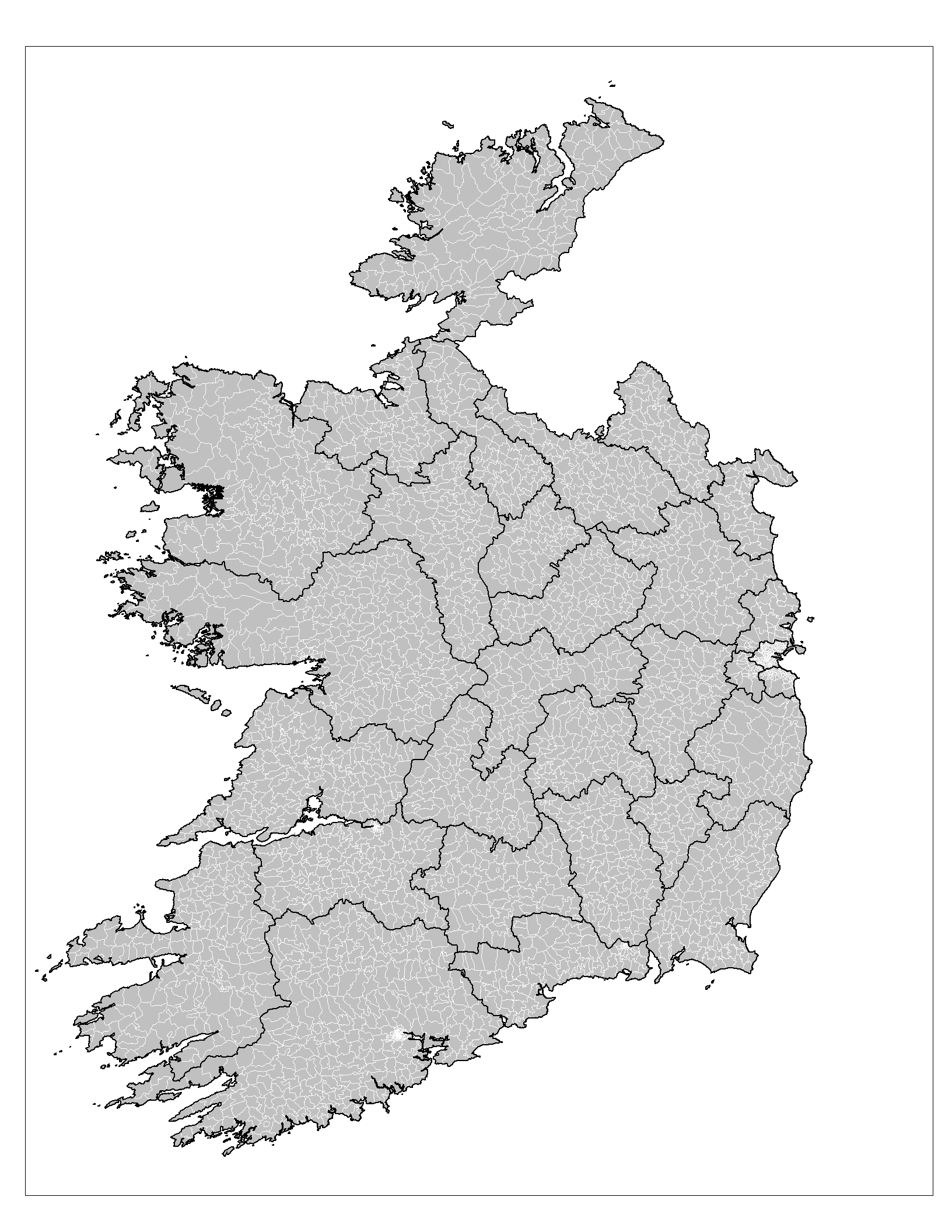|
Lisnamuck, Maghera Civil Parish
Lisnamuck is a townland lying within the civil parish of Maghera, County Londonderry, Northern Ireland. It lies south-west boundary of the parish beside that of Ballynascreen, with the Moyola River forming most of its southern boundary. It is bounded by the townlands of; Bracaghreilly, Drumballyhagan, Drumcrow, and Kirley. It was apportioned to the Drapers company as well as freeholds. The townland in 1926 was part of Carnamoney district electoral division as part of the Draperstown dispensary (registrar's) district of Magherafelt Rural District. Lisnamuck as part of Maghera civil parish also lies in the historic barony of Loughinsholin. See also *Maghera Maghera (pronounced , ) is a small town at the foot of the Glenshane Pass in County Londonderry, Northern Ireland. Its population was 4,220 in the 2011 Census, increasing from 3,711 in the 2001 Census. It is situated within Mid-Ulster Distric ... References Townlands of County Londonderry Civil parish of Magher ... [...More Info...] [...Related Items...] OR: [Wikipedia] [Google] [Baidu] |
Townland
A townland ( ga, baile fearainn; Ulster-Scots: ''toonlann'') is a small geographical division of land, historically and currently used in Ireland and in the Western Isles in Scotland, typically covering . The townland system is of Gaelic origin, pre-dating the Norman invasion, and most have names of Irish origin. However, some townland names and boundaries come from Norman manors, plantation divisions, or later creations of the Ordnance Survey.Connolly, S. J., ''The Oxford Companion to Irish History, page 577. Oxford University Press, 2002. ''Maxwell, Ian, ''How to Trace Your Irish Ancestors'', page 16. howtobooks, 2009. The total number of inhabited townlands in Ireland was 60,679 in 1911. The total number recognised by the Irish Place Names database as of 2014 was 61,098, including uninhabited townlands, mainly small islands. Background In Ireland a townland is generally the smallest administrative division of land, though a few large townlands are further divided into h ... [...More Info...] [...Related Items...] OR: [Wikipedia] [Google] [Baidu] |
Worshipful Company Of Drapers
The Worshipful Company of Drapers is one of the 110 livery companies of the City of London. It has the formal name The Master and Wardens and Brethren and Sisters of the Guild or Fraternity of the Blessed Mary the Virgin of the Mystery of Drapers of the City of London. More usually known simply as the Drapers' Company, it is one of the historic Great Twelve Livery Companies and was founded during the Middle Ages. History An informal association of drapers had organized as early as 1180, and the first (Lord) Mayor of London in 1189, Henry Fitz-Ailwin de Londonestone, was believed to have been a Draper. The organisation was formally founded in 1361; it received a Royal Charter three years later. It was incorporated as a company under a Royal Charter in 1438 and was the first corporate body to be granted a coat of arms. The charter gave the company perpetual succession and a common seal. Over the centuries the original privileges granted by Royal Charter have been confirmed a ... [...More Info...] [...Related Items...] OR: [Wikipedia] [Google] [Baidu] |
Loughinsholin
Loughinsholin () is a barony in County Londonderry, Northern Ireland. Its southeast borders the northwest shore of Lough Neagh, and itself is bordered by seven other baronies: Dungannon Upper to the south; Strabane Upper to the west; Keenaght and Coleraine to the north; Kilconway, Toome Upper, and Toome Lower to the east. It was formed largely on the extent of the northern part of the medieval Irish túath of Uí Tuirtri. The Sperrin Mountains rise to the west of Loughinsholin, with Slieve Gallion and Carntogher the two most notable mountains of the range in the barony. The Ballinderry River flows along the southern boundary of the barony, with the River Moyola cutting through the middle, both emptying into Lough Neagh. The largest settlement in the barony is town of Magherafelt. History Medieval history and Uí Tuirtri The area of land that forms Loughinsholin has changed control several times throughout history. During the first millennium, it was part of the over-kingdom ... [...More Info...] [...Related Items...] OR: [Wikipedia] [Google] [Baidu] |
Barony (geographic)
A barony is an administrative division of a county in Scotland, Ireland, outlying parts of England and historically France. It has a lower rank and importance than a county. Origin A geographic barony is a remnant from mediaeval times of the area of land held under the form of feudal land tenure termed feudal barony, or barony by tenure, either an English feudal barony, a Scottish feudal barony or an Irish feudal barony, which all operated under different legal and social systems. Just as modern counties are no longer under the administrative control of a noble count or earl, geographic baronies are generally no longer connected with feudal barons, certainly not in England where such tenure was abolished with the whole feudal system by the Tenures Abolition Act 1660. The position in Scotland is more complex, although the legal force of the Scottish feudal baron was abolished early in the 21st century.P. G. B. McNeill and H. L. MacQueen, eds, ''Atlas of Scottish History to 1707 ... [...More Info...] [...Related Items...] OR: [Wikipedia] [Google] [Baidu] |
Maghera
Maghera (pronounced , ) is a small town at the foot of the Glenshane Pass in County Londonderry, Northern Ireland. Its population was 4,220 in the 2011 Census, increasing from 3,711 in the 2001 Census. It is situated within Mid-Ulster District, as well as the civil parish of Maghera, which it was named after, and the former barony of Loughinsholin. History The town dates back at least to the 6th century to the monastery founded by Saint Lurach whose family were possibly evangelised by Saint Patrick. The ''Annals of Ulster'' say that the seat of the Cenél nEoghain was at Ráth Luraig in Maghera. Standing upon the site of the monastery, the present day ruins of St. Lurach's Church date back to the 10th century. They include, over a doorway, a relief of the crucifixion, possibly the oldest in Ireland. The crucification lintel is reproduced in the contemporary Catholic church, St Mary's. The old church and town were burned in the 12th century. Afterwards, Maghera became the seat ... [...More Info...] [...Related Items...] OR: [Wikipedia] [Google] [Baidu] |
Rural District
Rural districts were a type of local government area – now superseded – established at the end of the 19th century in England, Wales, and Ireland for the administration of predominantly rural areas at a level lower than that of the Administrative county, administrative counties.__TOC__ England and Wales In England and Wales they were created in 1894 (by the Local Government Act 1894) along with Urban district (Great Britain and Ireland), urban districts. They replaced the earlier system of sanitary districts (themselves based on poor law unions, but not replacing them). Rural districts had elected rural district councils (RDCs), which inherited the functions of the earlier sanitary districts, but also had wider authority over matters such as local planning, council house, council housing, and playgrounds and cemeteries. Matters such as education and major roads were the responsibility of county councils. Until 1930 the rural district councillors were also poor law gu ... [...More Info...] [...Related Items...] OR: [Wikipedia] [Google] [Baidu] |
Magherafelt
Magherafelt (, �mˠaxəɾʲəˈfʲiːlt̪ˠə is a small town and civil parish in County Londonderry, Northern Ireland. It had a population of 8,805 at the 2011 Census. It is the biggest town in the south of the county and is the social, economic and political hub of the area. It is part of Mid-Ulster District. History Magherafelt has been documented as a town since 1425. An earlier name for the area was ''Teach Fíolta'' - ‘Fíolta’s (monastic) house’. This would suggest that there was a monastic settlement here under the leadership of Fíolta. The site of the medieval parish church may be marked by the ruins of a later church and graveyard at the bottom of Broad Street. The Salters Company of London was granted the surrounding lands in South Londonderry in the seventeenth century as part of the Plantation of Ulster. Subsequently, the town began to take on its current shape with a central diamond forming the heart of the town. During The Troubles in the late 20th c ... [...More Info...] [...Related Items...] OR: [Wikipedia] [Google] [Baidu] |
Draperstown
Draperstown ()Toner, Gregory. ''Place-Names of Northern Ireland'', p. 85. Queen's University of Belfast, 1996; is a village in the Sperrin Mountains in County Londonderry, Northern Ireland. It is situated in the civil parish of Ballinascreen and is part of Mid-Ulster district. It is also part of the Church of Ireland parish of Ballynascreen and the Catholic parish of Ballinascreen, and within the former barony of Loughinsholin. The village lies at the intersection of the townlands of Moykeeran (), Moyheeland (), Cahore and Tonaght. Name Draperstown had its name bestowed upon it in 1818 by the Worshipful Company of Drapers, which had previously named Moneymore as Draperstown.Toner, Gregory; ''Place-Names of Northern Ireland, Volume Five, County Derry I, The Moyola Valley'', 1996. Prior to this however the settlement was originally known as "Borbury" (). It was then recorded as being called "The Cross" in 1813 and "Moyheelan" in 1821. Despite the name given to it by the Drapers ... [...More Info...] [...Related Items...] OR: [Wikipedia] [Google] [Baidu] |
District Electoral Division
An electoral division (ED, ) is a legally defined administrative area in the Republic of Ireland, generally comprising multiple townlands, and formerly a subdivision of urban and rural districts. Until 1996, EDs were known as district electoral divisions (DEDs, ) in the 29 county council areas and wards in the five county boroughs. Until 1972, DEDs also existed in Northern Ireland. The predecessor poor law electoral divisions were introduced throughout the island of Ireland in the 1830s. The divisions were used as local-government electoral areas until 1919 in what is now the Republic and until 1972 in Northern Ireland. History until partition Electoral divisions originated under the Poor Relief (Ireland) Act 1838 as "poor law electoral divisions": electoral divisions of a poor law union (PLU) returning one or more members to the PLU's board of guardians. The boundaries of these were drawn by Poor Law Commissioners, with the intention of producing areas roughly equivalent in ... [...More Info...] [...Related Items...] OR: [Wikipedia] [Google] [Baidu] |
Kirley
Kirley is a townland lying within the civil parish of Maghera, County Londonderry, Northern Ireland. It lies on the western boundary of the parish beside that of Ballynascreen, with the Moyola River flowing through its southern boundary. It is bounded by the townlands of; Bracaghreilly, Coolnasillagh, Drumconready, Drumcrow, Glenshane, Lisnamuck, and Moybeg Kirley. It was apportioned to the Drapers company. The townland in 1926 was part of Carnamoney district electoral division as part of the Draperstown dispensary (registrar's) district of Magherafelt Rural District. Kirley as part of Maghera civil parish also lies in the historic barony of Loughinsholin. See also *Maghera Maghera (pronounced , ) is a small town at the foot of the Glenshane Pass in County Londonderry, Northern Ireland. Its population was 4,220 in the 2011 Census, increasing from 3,711 in the 2001 Census. It is situated within Mid-Ulster Distric ... References Townlands of County Londonderry C ... [...More Info...] [...Related Items...] OR: [Wikipedia] [Google] [Baidu] |
Civil Parishes In Ireland
Civil parishes () are units of territory in the island of Ireland that have their origins in old Gaelic territorial divisions. They were adopted by the Anglo-Norman Lordship of Ireland and then by the Elizabethan Kingdom of Ireland, and were formalised as land divisions at the time of the Plantations of Ireland. They no longer correspond to the boundaries of Roman Catholic or Church of Ireland parishes, which are generally larger. Their use as administrative units was gradually replaced by Poor_law_union#Ireland, Poor Law Divisions in the 19th century, although they were not formally abolished. Today they are still sometimes used for legal purposes, such as to locate property in deeds of property registered between 1833 and 1946. Origins The Irish parish was based on the Gaelic territorial unit called a ''túath'' or ''Trícha cét''. Following the Norman invasion of Ireland, the Anglo-Normans, Anglo-Norman barons retained the ''tuath'', later renamed a parish or manor, as a un ... [...More Info...] [...Related Items...] OR: [Wikipedia] [Google] [Baidu] |
Drumcrow
Drumcrow (, ) is a townland lying within the civil parish of Kilcronaghan, County Londonderry, Northern Ireland. It lies in the north of the parish with the Moyola River running along its northern boundary. It is bounded by the townlands of; Drumballyhagan, Drumballyhagan Clark, Drumconready, Kirley Lisnamuck, Moneyshanere, and Moybeg Kirley. It was apportioned to the Vintners company. The townland was part of Tobermore electoral ward of the former Magherafelt District Council, however in 1926 it was part of Tobermore district electoral division as part of the Maghera division of Magherafelt Rural District. It was also part of the historic barony of Loughinsholin. Etymology Drumcrow is suggested to derive its name from the Irish ''Droim Cró'', meaning "bloody ridge". This is based upon the context of earlier forms of the name, which suggested the use of the noun ''cró'', which means "blood, gore". An early Irish poem makes mention of a ''Droim Cró'' (now Drumcree) in Co ... [...More Info...] [...Related Items...] OR: [Wikipedia] [Google] [Baidu] |

_1.517_-_Drapers'_Hall_Garden%2C_1860.jpg)




